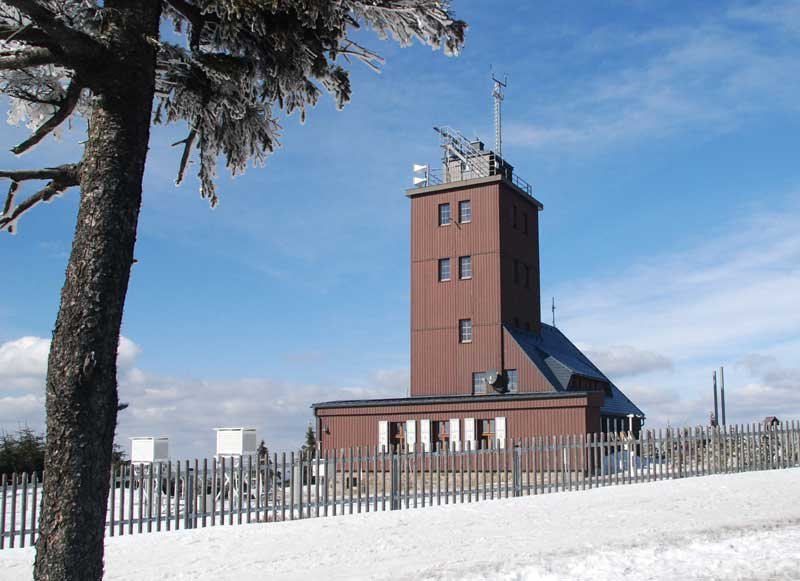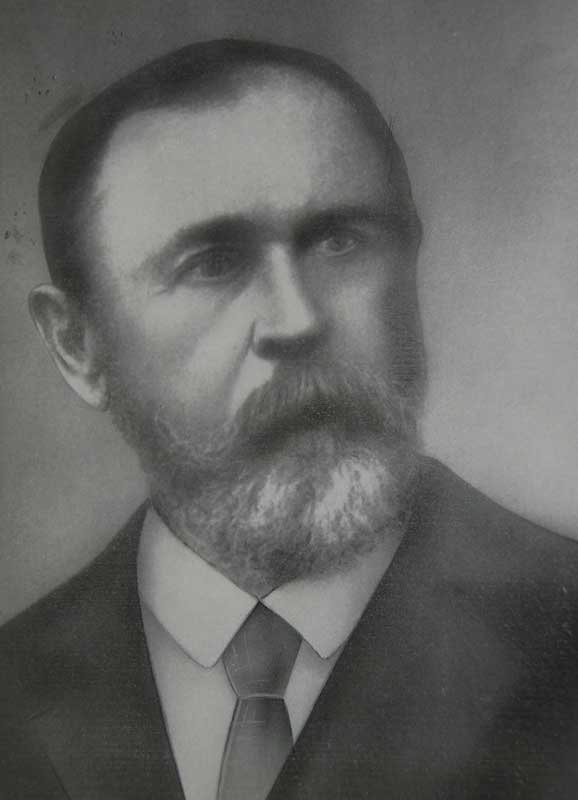How Cold is it on Saxony’s Highest Mountain?
A weather forecast has been compiled at the weather station on top of the Fichtelberg three times per day for 100 years now – thanks to a graduate of a forerunner of the TU Chemnitz
-

Close to the clouds: the weather observatory on top of the Fichtelberg is one of the stations of the German Meteorological Service. The 22 metre high tower has already withstood hurricanes. Photo: Mario Steinebach -

Karl Adolf Paul Schreiber initiated the construction of the Saxon weather station at the Fichtelberg and followed through with this plan in the years 1914 and 1915. Source: archive of the Fichtelberg’s weather station
In January 2016 an important anniversary was celebrated: the weather forecast which is compiled three times per day on top of Saxony’s highest mountain began 100 years earlier. The weather station at the 1,215 metre high Fichtelberg near Oberwiesenthal was initiated by Paul Schreiber, who involved the knowledge and experience he gained as graduate and teacher of the Technische Staatslehranstalten Chemnitz, an antecedent institution of the Technische Universität Chemnitz. Thanks to the carefully collected weather data from the last 100 years, it is nowadays known that the lowest air temperature on the Fichtelberg was measured on 9 February 1956: minus 30.3 degrees Celsius. The hottest day was the 27 July 1983 with 30.8 degrees Celsius. The warmest year was 2014 with an average temperature of 5.3 degrees Celsius. 2015 brought for the first time 13 summer days with temperatures above 25 degrees on Saxony’s highest mountain. The largest wind peak with 216 kilometres per hour – that means wind force 12 – prevailed on 3 January 1976 on top of the Fichtelberg. By comparison, the hurricane Kyrill, which in 2007 also caused damages on the campus of the TU Chemnitz, blew at 183 kilometres per hour over the top.
A measuring device for wind force is one example of several meteorological measuring instruments which Schreiber developed during his career. Some of them are still in duty in weather stations. On behalf of his meteorological inventions he became a senior government official of the royal Saxon weather station and was awarded the title of professor. Furthermore, he was a member of the German Polar Commission. Scientific papers in the fields of climatology, dynamic meteorology, as well as of radiation, evaluation technique, and statistics arose under his direction. Schreiber also issued meteorological yearbooks, containing scientific analyses of the meteorological observation material which had been collected in Saxony since 1882.
Schreiber was born on 26 August 1848 in Strehla near Dresden. From Easter 1864 to Easter 1867 he received his education at the Königliche Gewerbschule in Chemnitz, an antecedent institution of the Technische Universität Chemnitz. During the semester 1866/67 he received a medal for his efforts and therefore belonged to the best students of his group. In the following, he transferred to the Polytechnikum in Dresden and finally received his PhD at the University of Leipzig in 1872. Afterwards he returned to Chemnitz, where he worked at the educational institution up to 1 April 1921. Three years later, on 29 December 1924, he died in Dresden, aged 76.
Katharina Thehos
22.01.2016




